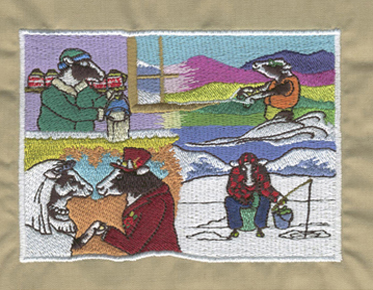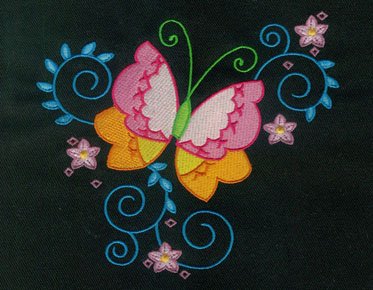What You Need To Know About Embroidery Digitizing
Hiring an embroidery digitizer or outsourcing embroidery digitizing services is important if you have no digital experience. Also, for complex projects, it is better to digitize or outsource to professionals rather than automated processes. Organizing a design planning conference that requires digitization will help you avoid errors and ensure a better overall design.
However, if you want to create one-of-a-kind garments with stretch and soft embroidery, you need to know many things, including valuing your fabrics when digitally embroidering. Before you digitize your design, you need to think about what you want to embroider. Choosing the right type of clothing and what you want to digitize is the key to getting it right. First, commands about design elements must be set by picking the appropriate needle, thread, direction, and sewing order.
Set the needle and thread order for your machine and transfer the scanned design to the fabric of your choice. There are a few steps to getting your embroidery machine ready to embroider your company logo or digital design.
Once you master the software, understand stitches, needles and operate your embroidery machine, you will get the best digital results. Now that you understand how your logo is digitized, it's time to see how a digitized logo can be applied to your apparel.
The process of converting existing graphics into embroidery design files for machine embroidery is called digitization. By applying stitches to these graphics in the embroidery software, you can run the file on the embroidery machine. Basically, digitization involves redrawing a logo or design in the form of stitches in a specialized embroidery program.
This not only saves time, but also invests in embroidery quality assurance, as fully qualified and trained embroidery digitizing technicians conduct comprehensive quality assurance checks and sample digitized embroidery. Digitization is the process of turning a work of art into embroidery, and the artists who do this are called digitizers, you guessed it. Digital embroidery is the process of converting a digital file into a design that can be embroidered on fabric using an embroidery machine.
Professionals can replicate many designs through digital embroidery, as the technique reduces the disadvantages associated with traditional embroidery processes. There are many skilled and experienced embroidery digitizers in the digitization industry who digitize artwork into embroidery machine compatible files using best-in-class digitization software that is reliable, reliable, and cost-effective. You can find a video that demonstrates some of the techniques for digitizing embroidery using any program you can imagine. The automatic digitizing program is very useful when you start embroidering for the first time.
One of the pitfalls is thinking that digitization means automatic digitization of machine embroidery. During the digitizing process, automated digitizing programs can make mistakes that are not apparent until the machine embroiders the design. This is a waste of time and money because you now have to digitize the design yourself, or pay someone else to do it for you.
If all you have is software dedicated to automatically digitizing embroidery designs, you're stuck with how the program interprets those graphics. You must know that both sleeves must have the same stitch type.
Obviously, as you can see, learning to digitize requires more than relying on the automatic digitizing capabilities of the embroidery software. That's why you should practice your embroidery skills before you start digitizing; otherwise, you won't know what the problem is. You should take the time to learn digitization, even if you didn't do it yourself.
Choose a course designed specifically for your requirements, which will not only teach you the basics of creating and editing designs, but also introduce you to the basics of embroidery digitization theory, which will help you understand the design and what's actually going on underneath the needle. If you are interested in creating or editing your own embroidery, my interactive online training on digitization will be an invaluable resource for you.
In this article, we have mentioned everything that limits you when it comes to digital embroidery; however, digitizing threads and artistic logos ensures that your company designs and logos are fully digital, and you can always contact us as we have digitized files for over a dozen years and more than 100 relevant experience to avoid any of the above mistakes. Our core business remains embroidery digitization, and we want to do it quickly and right the first time.
Most embroidery enthusiasts use other people's digital designs and appreciate the creativity these designs allow. They buy their software and believe that because they can create any type of graphics, they can digitize embroidery designs.
An embroidery machine cannot function
without digital design. Incorrect logo digitization can play a big role in your
success or failure when it comes to progressive machine embroidery. You have to
keep the embroidery machine running, and the best way is to outsource your
design and spend the time you would have spent digitizing and operating the
machine elsewhere. Embroidery machines cannot read the same file types as
computers, so you have to digitize your logo before the machine can do its job.



